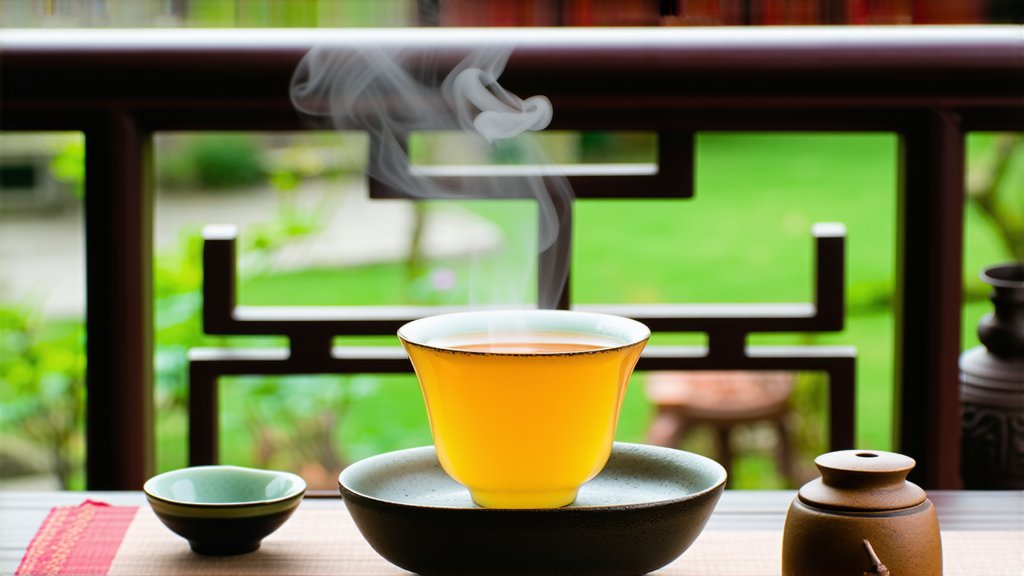
Yellow Tea, a unique and lesser-known category in the vast world of tea, holds a special place in China's rich tea culture. This article will delve into the history, varieties, production methods, brewing techniques, and sensory evaluation of one particular Yellow Tea variety - Hounjiu from Anxi, Fujian Province.
History: The origins of Yellow Tea can be traced back to the Ming Dynasty (1368-1644), but it truly gained prominence during the Qing Dynasty (1644-1912). Initially, Yellow Tea was a byproduct of the Green Tea production process when the leaves were not dried in time, leading to their yellow color. Over time, this accidental discovery evolved into a deliberate cultivation and processing method, giving birth to Yellow Tea as a distinct category.
Varieties: Yellow Tea is primarily divided into three main types based on their processing methods - Huang Xiao Chu (Slight Yellowing), Huang Ya (Yellow Shoots), and Huang Da Cha (Yellow Big Tea). Hounjiu belongs to the Huang Ya category, known for its delicate appearance and mellow flavor profile. Other notable Yellow Tea varieties include Junshan Yinzhen and Huoshan Huangya.
Production Methods: The production of Hounjiu involves several intricate steps that contribute to its distinctive characteristics. Firstly, the fresh leaves are plucked and then allowed to wither slightly, reducing their moisture content. Next, the leaves undergo a unique "yellowing" process, where they are wrapped in wet cloth or paper and left to ferment at low temperatures for an extended period. This process imparts a subtle yellow hue to the leaves and develops their characteristic flavor. Finally, the leaves are gently roasted to stop the fermentation and enhance their aroma before being sorted and graded for packaging.
Brewing Techniques: To fully appreciate the nuances of Hounjiu, proper brewing techniques are essential. Begin by warming your teapot with hot water to ensure even steeping. Use a ratio of approximately 1 teaspoon of tea leaves per cup of water (around 200ml) and adjust according to personal preference. Pour freshly boiled water over the leaves, allowing them to infuse for about 3-5 minutes. Strain the tea and enjoy immediately to savor its delicate flavors and smooth texture. For multiple infusions, slightly increase the brewing time with each subsequent steeping.
Sensory Evaluation: Evaluating Yellow Tea, particularly Hounjiu, requires a discerning palate and an understanding of its subtle qualities. Start by observing the tea's appearance - Hounjiu typically exhibits a bright yellow color with silver tips, indicating high quality. Upon inhaling, you may detect a faint, sweet fragrance reminiscent of honey or fresh hay. As you sip, notice the gentle, buttery mouthfeel and the interplay of flavors - expect a mild, slightly sweet taste with hints of fruitiness and a clean finish. The aftertaste should leave a pleasant, refreshing sensation on your palate. Remember, the key to appreciating Yellow Tea lies in its subtlety and complexity, so take your time to savor each sip.
In conclusion, Yellow Tea, specifically Hounjiu from Anxi, offers a fascinating journey through history and flavor for tea enthusiasts worldwide. Its unique production methods and delicate character make it a cherished gem within the diverse landscape of Chinese tea culture. By understanding its origins, varieties, production processes, brewing techniques, and sensory attributes, one can truly appreciate the artistry and craftsmanship behind this exquisite beverage. So, next time you embark on a tea-tasting adventure, consider exploring the world of Yellow Tea and discover the elegance of Hounjiu for yourself.